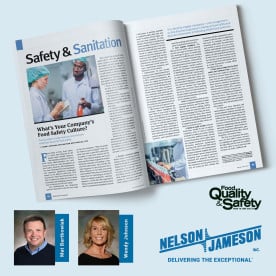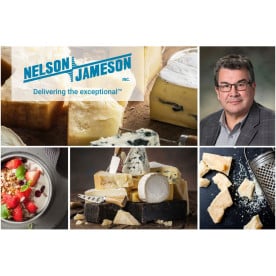Monthly Archives: February 2017
- February 21, 2017
Now that we’re well into the 2017, it’s safe to say that certain foods and beverages are outshining others in regards to new product launches, menu appearances and overall hype. As always, Nelson-Jameson is here to digest all of these culinary crazes into bite-sized highlights with our annual food and beverage trends blog! Here’s what we predict will be more than just a flash in the pan:
You Don’t Know Jack…Yet
Plant-based meat alternatives are gaining major traction in both the restaurant and grocery worlds, which means we’re likely to see a veggie-centric shift in the variety of tasty protein sources available to supplement a healthy diet. Jackfruit, an Asian tree fruit that’s
- February 06, 2017
There have been times in the past when I became ill with a supposed food-borne illness, or found a bug in a product in my home and wondered did





